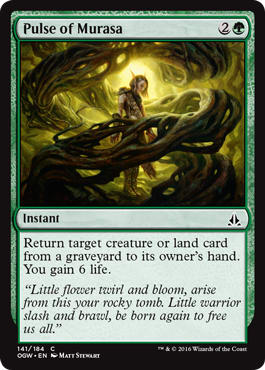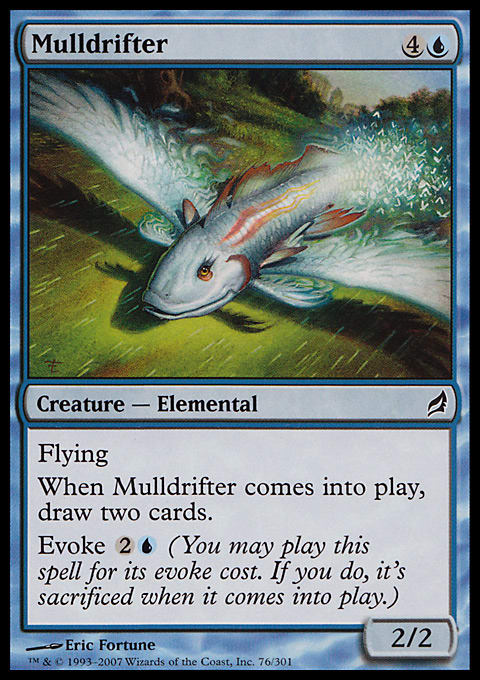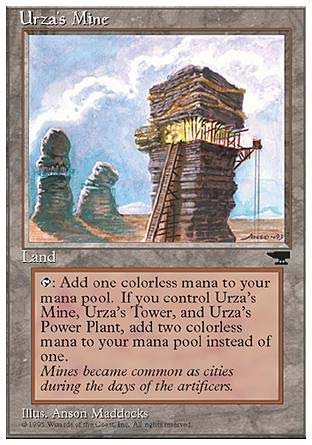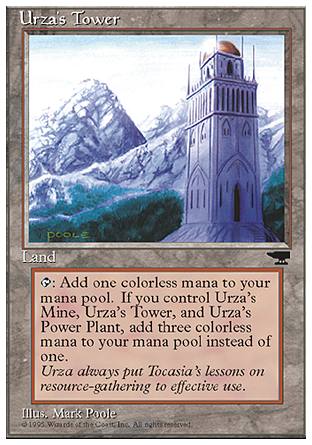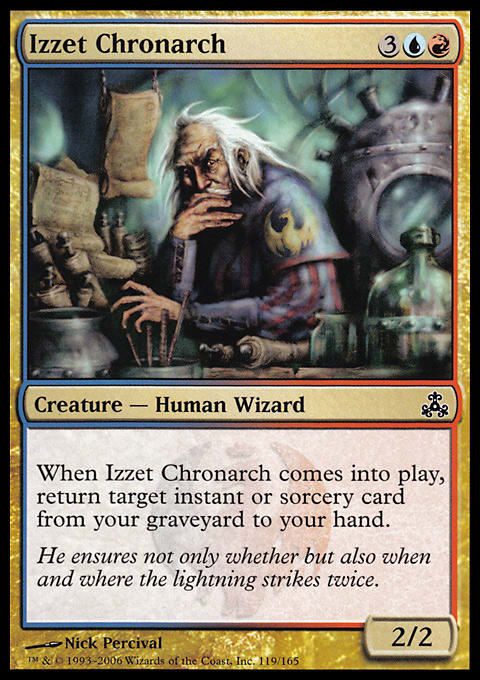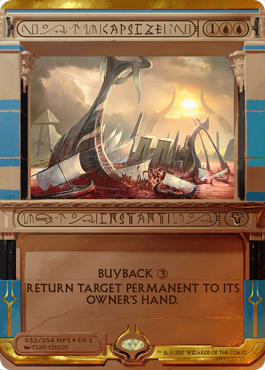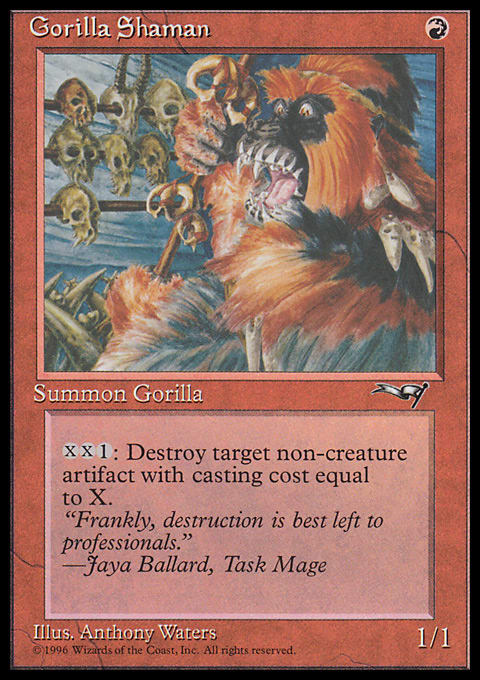It’s sidebar time, folks. I work on decks with Jason (jsiri_84 on Magic Online) a lot. Jason had success with Stompy—the mono-green Rancor-powered deck—in Pauper back when there were large Premier and regularly scheduled Daily Events. A frequent collaborator, he’ll be making regular appearances in my column.
Anyway, Jason came to realize that black removal, while great, matches up poorly with the format at large. And he’s not wrong. The current popular black removal spells include Chainer's Edict, Disfigure, and Oubliette. These are powerful options, but if the wrong one ends up in your hand in the wrong matchup, things can look dire. The currently crop of black removal is designed for a kill-all-monsters approach. Disfigure handles early threats with Edict and Oubliette (or other spells) performing mop-up duty. Yet, against a deck that can flood the board with Carapace Forgers and Myr Enforcers, these spells may be too slow. A Doom Blade might be quicker, but it is largely useless against one of the more popular strategies in Mono-Black Control. I learned this by attempting to run a Pulse of Murasa–powered Sultai deck.
Murasa Sultai ? Pauper | Alex Ullman
- Creatures (12)
- 4 Omenspeaker
- 4 Mulldrifter
- 2 Chittering Rats
- 2 Mnemonic Wall
- Spells (25)
- 3 Disfigure
- 1 Vendetta
- 4 Counterspell
- 4 Diabolic Edict
- 2 Chainer's Edict
- 2 Echoing Decay
- 1 Doom Blade
- 2 Exclude
- 2 Forbidden Alchemy
- 2 Pulse of Murasa
- 1 Ghostly Flicker
- 1 Capsize
- Lands (23)
- 3 Evolving Wilds
- 4 Dismal Backwater
- 2 Jungle Hollow
- 2 Thornwood Falls
- 1 Forest
- 6 Island
- 5 Swamp
I do not know why I was so focused on pairing Pulse with black cards originally when the natural best card to bring back is Mulldrifter. The flying fish is the answer to so many of Pauper’s questions. In this case, being able to evoke the Elemental on turn three and then leave mana up to counter or bring it back for more cards at the end of turn proved to be a very enticing sequence.
The problem with this deck, in addition to the way the removal lined up, was the flow of cards. Omenspeaker over Sea Gate Oracle was a mistake, as the latter card fills a similar role but replaces itself instead of just setting up a draw. The lock of Chittering Rats, Ghostly Flicker, and Mnemonic Wall (remember to set a stop on your opponent’s draw step) was more cute than effective. Mnemonic Wall and Pulse of Murasa proved to be a worthwhile combination. Casting a Pulse early and then Regrowing it to set up a stalwart defense of chump-blocking Gurmag Angler or just gaining 12 life to go up a Mulldrifter often provided the necessary cards and time needed to win the game. Making three colors work without green fixing or Prophetic Prism in Pauper is a challenge that was on full display in this build.
If I were to further pursue this strategy, I would make a concerted effort to figure out exactly what removal was warranted. Innocent Blood may simply be the best 1-mana kill spell at the moment, and finding a way to make that work with Forbidden Alchemy and Pulse of Murasa is not outside the realm of possibility.
Removing black removal from the equation would mean relying on either red with its burn suite or white and that color’s access to Journey to Nowhere. The strength of the interaction of Mnemonic Wall and Pulse of Murasa asks any deck running both to have access to spell-based interaction rather than enchantments. So I guess that means we are going to be red.
Jason looked at a deck we had worked on before that has caught on somewhat: Izzet Tron. Here is an older build we had worked on.
Izzet Tron ? Pauper | Alex Ullman
- Creatures (3)
- 2 Mulldrifter
- 1 Mnemonic Wall
- Spells (35)
- 3 Lightning Bolt
- 1 Magma Spray
- 4 Impulse
- 2 Mana Leak
- 2 Counterspell
- 2 Twin Bolt
- 2 Artificer's Epiphany
- 2 Exclude
- 1 Capsize
- 2 Mystical Teachings
- 4 Condescend
- 1 Repeal
- 3 Flame Slash
- 1 Rolling Thunder
- 3 Prophetic Prism
- 2 Pristine Talisman
- Lands (22)
- 4 Urza's Tower
- 4 Urza's Mine
- 4 Urza's Power Plant
- 4 Swiftwater Cliffs
- 2 Izzet Guildgate
- 4 Island
Currently the less popular deck running the Tron mana engine, Izzet Tron operates like a U/R control deck with a dominant, mana-based endgame. In order to understand some of the choices we made, it is important to look at the more common version of Tron.
Tron ? Pauper | TNKS, 5?0. Pauper League
- Creatures (13)
- 4 Fangren Marauder
- 4 Mulldrifter
- 4 Sea Gate Oracle
- 1 Ulamog's Crusher
- Spells (29)
- 4 Ancient Stirrings
- 2 Rolling Thunder
- 4 Lightning Bolt
- 4 Chromatic Sphere
- 4 Chromatic Star
- 4 Expedition Map
- 3 Prismatic Lens
- 4 Prophetic Prism
- Lands (18)
- 4 Urza's Tower
- 4 Urza's Mine
- 4 Urza's Power Plant
- 4 Haunted Fengraf
- 2 Unknown Shores
- Sideboard (15)
- 3 Ancient Grudge
- 2 Circle of Protection Green
- 2 Circle of Protection Red
- 2 Rest for the Weary
- 2 Resounding Scream
- 2 Ray of Revelation
- 1 Tranquility
- 1 Ulamog's Crusher
Tron is not a control deck, but rather, a combo deck. The goal is to assemble the Urza Tron—Urza's Mine, Urza's Power Plant, and Urza's Tower—as quickly as possible to resolve any number of game-ending spells. To facilitate this, the deck runs the full four of Expedition Map, Chromatic Sphere, and Chromatic Star to help find key lands while also filtering for colored mana. Tron is a multicolored deck but runs a scarce few lands that can actually produce specific colors of mana. The deck tries to jump the curve to present large threats like Ulamog's Crusher or Rolling Thunder.
The Spheres and Stars help the deck to cast its spells. Because Tron is breaking so many eggs, Fangren Marauder is an attractive finisher. The ability to pad the life total while committing a 5/5 to the board—capable of trading with an Angler—is definitely not bad. Combine this with the fact that two of the current top decks—Affinity and Kuldotha Jeskai—often sacrifice their own artifacts and are most definitely attempting to deal 20, and the reasoning behind the Beast should come into crystal focus.
And yet, we completely eschewed it for Pulse of Murasa and its measly 6 life.
Why? Tron is a uniquely powerful deck, but aside from committing threats to the board, it is very light on interaction. In the old world, dominated by Cloud of Faeries, this game plan made sense. The ability to enact your own game plan was incredibly valuable since anything but complete focus on a back-and-forth playstyle would be invalidated by Delver’s superior countermagic or Esper Combo’s resilience. Without Cloud of Faeries, this is no longer the case. The best monomaniac decks are Affinity and Izzet Blitz (and, to a lesser extent, Elves Combo). These decks all have weaknesses that can be properly exploited and attacked. It has become far more beneficial to attempt to play an interactive game early. Where Tron can shine, however, is in completely invalidating opposing plays late.
Murasa Izzet Tron ? Pauper | Alex Ullman
- Creatures (10)
- 4 Sea Gate Oracle
- 4 Mulldrifter
- 1 Mnemonic Wall
- 1 Izzet Chronarch
- Spells (27)
- 4 Lightning Bolt
- 2 Flame Slash
- 2 Twin Bolt
- 2 Exclude
- 1 Capsize
- 2 Pulse of Murasa
- 4 Condescend
- 1 Rolling Thunder
- 2 Into the Roil
- 4 Prophetic Prism
- 3 Expedition Map
- Lands (23)
- 4 Urza's Tower
- 4 Urza's Mine
- 4 Urza's Power Plant
- 4 Swiftwater Cliffs
- 2 Izzet Guildgate
- 1 Haunted Fengraf
- 1 Unknown Shores
- 3 Island
- Sideboard (15)
- 1 Ulamog's Crusher
- 1 Electrostatic Bolt
- 1 Echoing Truth
- 1 Electrickery
- 2 Dispel
- 2 Pyroblast
- 2 Hydroblast
- 2 Negate
- 3 Gorilla Shaman
From our earlier build, we removed Impulse and returned Expedition Map to the fold. Impulse is fantastic, and its ability to find anything trumps Map’s Sylvan Scrying impression. However, our version leans a bit harder on Unknown Shores than the previous attempt, and so, Map has earned some merit. Similarly, the interaction of Pulse of Murasa and Mulldrifter prompted other shifts.
The deck migrated from being a light touch Mystical Teachings deck focused on card quality to a Mulldrifter-fueled card-quantity engine. Sea Gate Oracle found a home as, again, it partners well with Pulse. Originally, we included two copies of Mnemonic Wall, but I have since switched to a single Wall paired with an Izzet Chronarch. I did this to have the option to trade Chronarch and a Lightning Bolt for a Gurmag Angler and to also turn one of the recursion engines into a threat.
The beauty of the deck resides in Pulse of Murasa. Being able to aggressively block early or evoke a Mulldrifter for cards and then retrieve it later, all with a life boost, can be backbreaking for opponents striving to deal 20 damage. Pulse and Wall or Chronarch present a defensive machine akin to Gravedigger for Gravedigger. Having Chronarch in the loop allows it to trade with smaller attackers, giving it some added utility. I have won many games in which I was in the single digits at one point by holding back Pulse until absolute last possible moment and then wasting adversarial burn spells.
The counters and removal are geared toward the current metagame. Repeal was amazing in a world in which you could remove an Insectile Aberration for a single blue mana. Now that threats include Myr Enforcer, Gurmag Angler, and Curse of the Bloody Tome, Into the Roil has become the bounce spell of choice. In a world full of 2/2s, I could see the case for a copy of Jilt, but for now, I am pleased with Into the Roil.
Lightning Bolt’s rate is too good to pass up, and Flame Slash, while slow, still deals with just about everything. Combined with Wall or Chronarch, it is also an expensive answer to the format’s largest threats. Twin Bolt is a cheap way to handle swarms and comes in handy against midrange decks as well. The ability to block with Oracle or Mulldrifter and then snap off a Twin Bolt to take out two attackers after damage cannot be underestimated in preserving a life total and making it to the endgame.
Four copies of Condescend and two Excludes is not a lot of countermagic. Exclude is there for those must-stop monsters like Atog, Gray Merchant of Asphodel, Angler, or Crusher. Condescend is there to help force through key cards late but also to act as a catchall early while sculpting draws. Determining what matters in a matchup is key for knowing when to spend a Condescend, and wasting one on something meaningless could spell doom later. The key is to survive.
The endgame comes down to two cards: Capsize and Rolling Thunder. The Tempest duo makes use of the abundance of mana Tron can produce. Rolling Thunder is cut and dry: Point it at your enemy’s head for lethal. Capsize takes more time, but by slowly removing every permanent from the opponent’s side of the table, you can eventually attack for lethal. I am more willing to bring the Thunder early, as it can protect the life total and be rebought later. Capsize plays nicely with Wall and Chronarch, allowing them (and basically every other permanent) to be a source of recurring card advantage. Be wary of casting Capsize against decks with access to Perilous Research, as that is quite a feel-bad moment.
The sideboard options available to this deck are rather fantastic. Access to both Hydroblast and Pyroblast give 1-mana counters or kill spells for the popular blue and red decks. Dispel and Negate help to wage counter wars, while the latter also fills the role of Exclude against spell-based attacks. Ulamog's Crusher often comes in as an additional way to end games, especially after the other side of the table may side out his or her large-bore removal spells. Electrostatic Bolt helps against swarm decks while also picking off pesky Myr Enforcers and Spire Golems. Echoing Truth is another catchall but is the card with which I’ve been least impressed. I am considering cutting the Truth for a Whispers of the Muse for matchups in which winning the card-volume battle is key. Another option is Train of Thought, as the replicated copies are difficult to counter. Serrated Arrows may deserve a look if swarm decks continue to pick up steam.
Gorilla Shaman is a bit narrower in focus, but it is an absolute game-winner against Affinity. The key is to never play out Gorilla Shaman in a situation in which it does not hit at least one target. Turn two is fine, but turn three may be better. Turn four off full Tron is just absurd. As good as Gorilla Shaman has been, it may be right to cut the third for access to a Shattering Pulse, which has the advantage of being able to hit creatures. Shattering Pulse also may be better in the Tron mirror, against which it can just as easily pick off Prophetic Prism.
In the current metagame, I would list Affinity, Kuldotha Jeskai, Goblins (and other random aggressive decks), and Dimir Delver as good matchups. Stompy, Delver, Izzet Blitz, and Dimir Teachings are even. Mono-Black Control, while not favorable, is far from bad. Traditional Tron is probably the worst matchup, as those decks are designed to reach their endgames faster than we are, and they can start resolving huge threats earlier. It is an uphill climb, but far from unwinnable.
The key in many sideboarded games is to keep the game going until Tron is online. Many players will side in land destruction, but Pulse of Murasa helps to defend those attacks. Sometimes, players will bring in graveyard hate to help keep recursion at bay, but since that is only a secondary attribute of our game plan, it can be evaded. If either of these strategies picks up steam, it may be worth it to include extra copies of Pulse of Murasa in the sideboard and potentially Tilling Treefolk as well.
Murasa Tron is a powerful deck. It plays like a typical control deck early but can jump the curve in the mid- and late game to establish an overwhelming position. There is little as good as going down to 5 life, back to 11, and then starting to slowly choke your opponent off resources while your flying fish peck at his or her life total . . .
. . . Or just pointing Rolling Thunder at the opponent’s face—that’s pretty fun, too. And this deck gives you the opportunity to do both. That is most assuredly a Good Thing.














